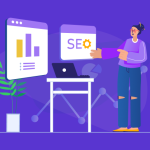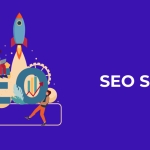Do you know which sites Google wants to rank at the top position? Is it the sites with more backlinks as per the link-building tips? Or those sites that have buttoned up on-page code? None of these are the most important for Google. Then what is the most important factor for Google to rank a page at the top? The answer is user experience. And every Google Update is developed around this sole factor.
Google has said earlier that they are about to bring a new algorithm in 2021. Just like the previous Google updates, this upcoming Google update is also focused to improve the user experience. But before we dig deeper into the upcoming 2021 Google update let’s have a glance at those previous updates.
Table Of Content
The Latest Google Update That You Need To Focus on 2021
Google is all set to launch their latest update. You may have heard the announcement made by Google, and that is they have made another update in order to enhance the user experience. They named the latest update “Page Experience.” But what is this page experience anyway?
A quick Summary
- In order to include a specific factor that is named Page Experience, Google is planning to update its algorithm this year 2021.
- Some of the existing Google search signals, that are safe-browsing, mobile-friendliness, intrusive interstitial guidelines, and HTTPS as well.
- Those metrics of Google’s Web Vitals are also included in this update, which covers the site’s visual stability, interactivity, and also loading speed.
- Understanding all these signals along with making the necessary steps will be a priority for all the site owners.
- You need to focus on improving page speeds, optimizing for mobiles, alt text for images, and also CTAs.
What Is Page Experience?
All the aspects of how viewers or users are interacting with a web page and how painful or good it is for them. And there are some Google search signals that are included in Google update; those are HTTPS, safe-browsing, mobile-friendliness, and obviously intrusive interstitial update. This also included the metrics that are present in Google’s Web Vitals.
Currency there are three facets, which are the focus.
- Loading: We can never forget about the loading speed. The time a page takes in order to load the whole content of the particular page is really vital for user experience.
- Interactivity: The time from when the viewer or user first interacts with a particular web page is considered interactivity. It can be a tap or a click.
- Visual Stability: Visual stability refers to the unexpected and annoying movements of the content.
You may have worked for all the above-mentioned page experiences. But there are some stats that you should know. With increasing loading time, the bounce rate of any web page also increases. Here is a chart of the bounce rates along with increasing loading time.
| Increasing Loading Time | The Probable Increase of Bounce Rate |
|---|---|
| 1 second to 3 seconds | 32% |
| 1 second to 5 seconds | 90% |
| 1 second to 6 seconds | 106% |
| 1 second to 10 seconds | 123% |
Slow page speeds
How do you when you click on a link and wait for the page to load fully? Well, maybe it just takes a few seconds but feels like an eternity. That is how your visitors feel when they have to wait while your page takes longer to load.
Bad design and structures
A bad website or page design can create a lot of confusion for the visitor to find what the person is looking for. There is a thing called “User-friendly design.” So, you need to make sure that your website is fulfilling that.
You may have a page that does not take an eternity to feel. But once it is open it confuses the visitor or viewer. The reason can be the puzzled or cliched design of your website. Keep in mind all the factors of user experience. Here the visitor is your website’s user.
Too many pop-ups
Unwanted pop-ups always make us irritated. For example, your website has a content of one of your products with two options, “No, go back” or “Yes, place my order.” Now your visitor wants to click on “No, go back,” but a sudden notification pops out and it shifts the whole page a little down. And as a result your visitor accidentally clicks on the other option. I hope you are understanding what the person will feel at that moment.
Lack of engagement
There are many websites, which think that only selling products is the purpose why they are here. But the consumers of recent days, want to be engaged more. They want to be entertained. They also want to be understood. That is the reason why likeability and empathy are important factors. Tips For Boosting page ExperienceSo, as now you are done with those bad page experiences that you need to fix, here are some tips for enhancing your page experience as per the Google update.
- Optimize your searches for mobile users. You should optimize your website or web pages for mobile searches. 50.81% of the total global traffic is generated from mobile devices. So, it is clear how vital it is to make your web pages mobile-friendly.
- Enhance your website’s page speed. As I have told earlier that the loading speed of a page has an effect on the conversion rate. With a delay of only one second, there can be a fall of 70% on the conversion. As per the Google update, 3 seconds is the best practice of page loading time.
- Separate CTAs. Call To Action is one of the factors that directly affect the interaction, and conversion rate also. Virtually every site contains this in one form or the other. Here, the consumers or visitors are requested to take some very specific actions, such as signing up, subscribing for updates, making purchases, and asking for appointments. All these should be specific, short, and totally clear about the action that is required.
Older Pieces of Google Update
After heading towards the latest Google update of 2021, let’s look back to some important older updates that are effective to date.
1. Panda Update
On 23rd February 2011, the Panda update was first launched. These pretty big algorithmic improvements had impacted 11.8% of the users’ queries. The name was given after the engineer who developed the primary update breakthrough.
2. Hummingbird Update
Since the fall of 2013, the Google Hummingbird update has been noticeable on every search result. It took the users to a more personal and intimate search results page. Before the Hummingbird era, in spite of keywords, the whole query was taken into consideration.
Whether it is a single word query like “games” or a complete question, like “Who was the first astronaut to step in the Moon.” The hummingbird algorithm has changed it totally.
3. Penguin Update
The Penguin update has changed the search engine optimization or SEO. This update was brought because Google had targeted manipulative link building and webspam tactics.
The first time in April 2013, when “webspam algorithm update” or the official name Penguin update was released, it affected around 3% of the search engine results as per the approximation of Google. And later, in 2013, when Penguin 2.0 came to the market, it had affected around 2.3% of all queries.
Read Also: 10 Steps to Build Google Penguin Friendly Backlinks
4. Intrusive Interstitials Update:
At the end of 2014, Google had introduced a label called mobile-friendly. On the 10th January 2017, Google declared that those sites with intrusive interstitials might face a Google ranking drop. But the question was, what are intrusive interstitials? And the answer is essential to pop-up ads. These ads cover the main content and create a negative user experience. However, the issue is on the moderate level for desktop users but was really annoying for mobile users. And this is the reason behind intrusive interstitials update.
Read Also: 15 Ways to Grow Your SEO Rankings
5. Fred Update
On 7th March 2017, an adjustment to Google’s search ranking algorithms was implemented. That update was named Freud update. But Google has not officially confirmed the Freud update to date. As per most of the SEOs, the primary factor behind this update was quality. In Google’s view, aggressive monetization tactics were impacting the user’s experience in a negative way.
Conclusion
Google is the top search engine. On average, Google processes more than 40,000 search queries. Around 5.4 million searches are done using this top search engine on a daily basis. So, search engine optimization has become optimizing your content or web pages for Google search engine. In order to do that, you need to focus on each Google update that is being launched in the market.
Read Also:








